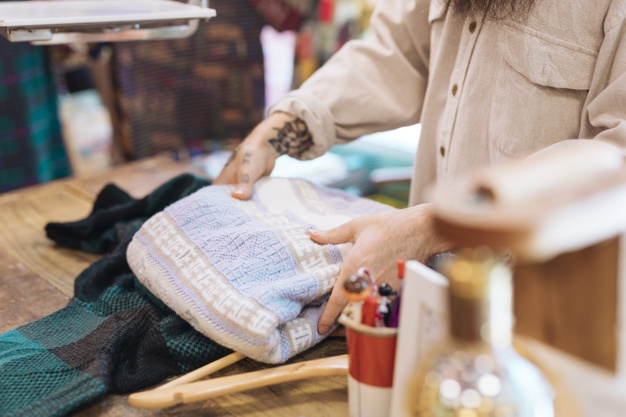

Fashion designing is something that appeals to every fashion and trend lover. Looking at the latest trends and comprehending them from the depth are two different things.
You can learn about five types of fashion designing in this article which is explained in a very simple and easy way.
Fashion designing ranges from creating art pieces to minimalist and practical clothing and accessories. It involves creating clothes and accessories that reflect social and cultural level influences.
Fashion design is an extensive term; it cannot be restricted to any particular fashion trend or item. However, the term is very subcategorization, and overlapping exists in fashion designing, but it can be categorized into five major types:
The literal meaning of Haute and Couture means high class and dressmaking or needlework, respectively. Haute couture fashion means high-class fashion, and it tops the fashion design hierarchy.
A couturier is a person or company who creates garments that match the level of Haute Couture Fashion, and a couturier is like its female version. Being expensive is not the only benchmark of Haute Couture Fashion, the couture has very specific rules to qualify for Haute Couture Fashion.
It is created with the highest quality craftsmanship and involves the creation of custom-fit clothing. It is often handmade and takes countless person-hours.
‘Fédération De La Haute Couture Et De La Mode’, which stands for Federation of Couture and Fashion, sets the dates for fashion weeks and determines the standards for the quality of Haute Couture Fashion.
Luxury fashion producers exclusive custom-made collection that is also mass-produced and readily available for the public. It includes high-quality material that is not handmade but also not produced in masses by machines.
There are many popular luxury fashion brands in the market like Gucci, Armani, Zara. They have high price tags, so they are often associated with the elite class, making them even more desirable.
However, luxury fashion brands still do not match the Haute Couture Fashion standards.
Luxury fashion is limited and consists of expensive materials hence it is more desirable. The prices of luxury fashion material are high, giving its customer a sense of being a part of an Elite market.
Ready to wear the fashion or High Street fashion is produced in mass quantities and accessible to the public in large quantities. It is the contrast to Haute Couture, and it is available to the public in large amounts in standardized sizes.
It is often called d prêt-à-porter, and it is typically made for unique individual proportions. Haute Couture Fashion often inspires ready-to-wear fashion garments, and they appeal to the current market trends. Multiple ready-to-wear fashion trends are released every wear.
It focuses on producing attractive garments and appeals to the current market trend. Ready-to-wear fashion has a shorter turnaround time, and its designers need to stay updated to provide top-notch fashion garments for fashion lovers.
Fast fashion focuses on trendy marketable clothing which is available at affordable prices. It is not much affected by the seasonal collection of clothing, and it has a very mass production rate and rapid turnover rate.
Fast fashion may go out of fashion in a few months only, but they are more appealing to customers who want to go with the trend and are readily available and affordable for everyone.
The driving idea behind fast fashion is producing desirable and trendy clothes which are readily available for the public. However, this fashion trend has been accused of promoting throwaway fashion, which negatively impacts the economy and the environment.
Economy fashion is solely based on mass production and easy availability to the customer. Economy fashion focuses on profit; hence cheap labour and material are involved in it. It is at the bottom of the fashion hierarchy.
It may take inspiration from seasonal trends or can often replicate the exact rain duty limited budget and time. Likewise, it copies seasonal trends, but it cannot replace a trend or set a new trend due to constraints on budget and time. The final product is often low standard and cheap, and the durability of the material is also very low. These clothes rarely stay in trend and are very easily replaced, but they are perfect for people who have constricted budgets.
A fashion designer is the one who is responsible for creating variable clothing and maintaining the trend.
Fashion designers are called fashion designers, but sometimes they are often known as clothing designers, fashionista, or apparel designers, depending on their job titles.
Fashion studies are not limited to a brick-and-mortar University. If you are passionate about it, you can pursue a course in any mode.
There are various types of fashion designing courses available in the market. The FD industry offers such appealing courses, which welcomes fashion designers ranging from beginners to experience and provides ample opportunities. It excels in the forte of aspiring designers, and you can easily roll through GAT at JD.
Either you are a customer of the fashion design industry as fashion design is available to everyone. Different fashion design jobs are available in the fashion world.
The fashion industry has a lot of opportunities for passionate and skilled people. You can try your luck in fashion designing if you are dedicated and passionate about it. It has ample opportunities for talented and skilled people.